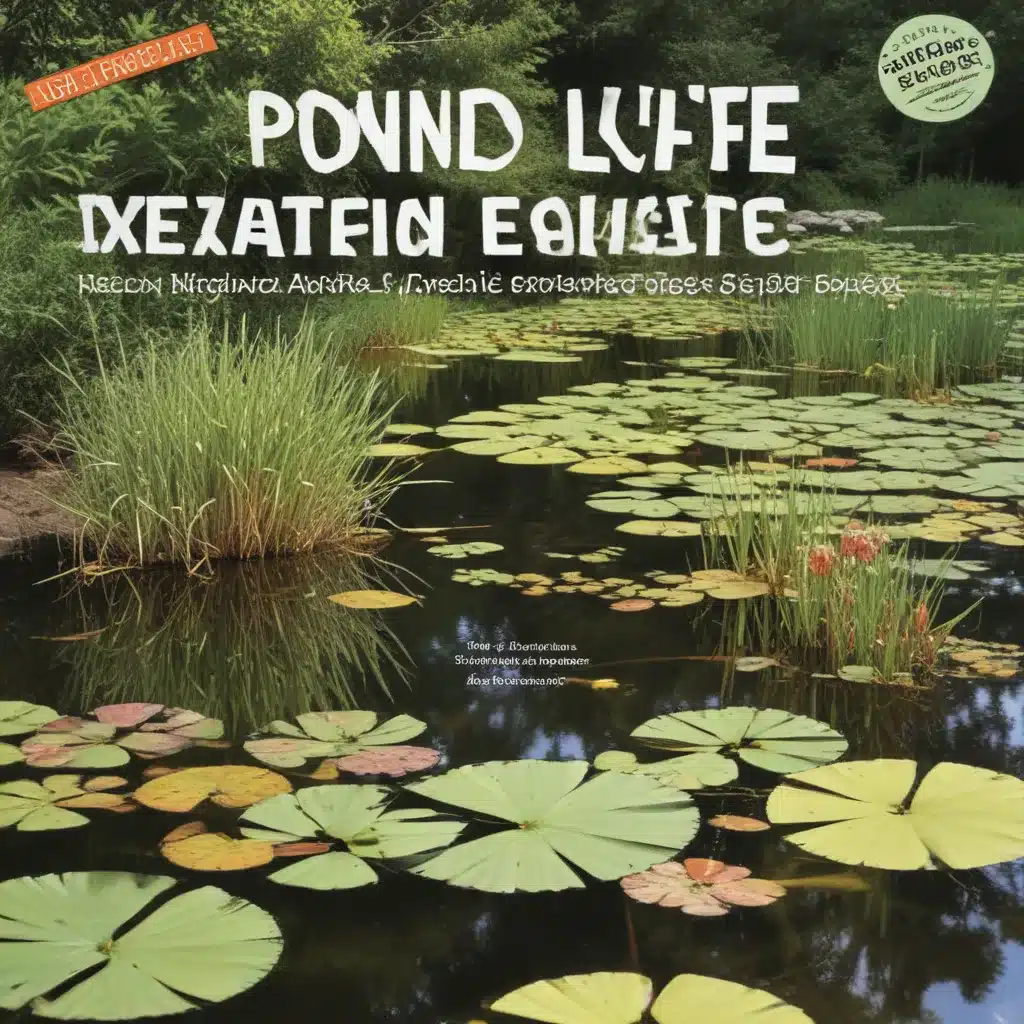
Tucked away on the grounds of Crooked Pines Farm lies a serene pond, a vibrant microcosm teeming with life. As a farm educator, I’m excited to guide you on an exploration of this aquatic ecosystem, unlocking the fascinating world that exists beneath the surface.
Pond Environments
Ponds are shallow, still bodies of freshwater that support a diverse array of plant and animal life. These aquatic habitats are characterized by their nutrient-rich waters, varying depths, and the presence of emergent and submerged aquatic vegetation. Unlike lakes, ponds are typically smaller in size and have a more balanced ecosystem, often with a thriving community of microorganisms, invertebrates, fish, and even amphibians.
One of the key features of a healthy pond is its biodiversity. From the microscopic plankton to the majestic herons that wade along the shoreline, each organism plays a vital role in the delicate web of life. Factors like water temperature, pH, dissolved oxygen levels, and the presence of abiotic components like rocks and sediment all contribute to the overall well-being of the pond ecosystem.
Aquatic Flora
Aquatic plants are the foundation of the pond’s food chain, acting as primary producers through the process of photosynthesis. These diverse macrophytes range from floating duckweed and water lilies to submerged pondweeds and emergent cattails. Each species has adapted to thrive in the unique conditions of the pond environment, whether it’s extracting nutrients from the water, securing themselves in the substrate, or providing shelter and food for other inhabitants.
The microscopic world of the pond is equally fascinating, with a vast array of phytoplankton like diatoms, green algae, and cyanobacteria. These photosynthetic organisms form the base of the aquatic food web, supporting a diverse community of zooplankton and other consumers.
Aquatic Fauna
Venture beneath the surface, and you’ll discover a thriving community of invertebrates. Pond habitats are home to a rich diversity of macroinvertebrates, such as dragonfly nymphs, caddisfly larvae, and freshwater snails, each with its own unique adaptations and ecological roles.
The presence of fish species like bass, sunfish, and minnows adds another layer of complexity to the pond ecosystem. These vertebrates not only play a part in the food chain but also contribute to the overall health of the water through their feeding and waste-processing activities.
Equally captivating are the amphibians that call the pond home. Frogs, toads, and salamanders spend part of their life cycle in the aquatic environment, serving as both predators and prey within the complex food web.
Ecological Interactions
Ponds are dynamic systems, with a delicate balance of nutrient cycling and energy flow. The intricate food webs that develop in these aquatic environments are a testament to the interconnectedness of all living things. Predator-prey relationships, symbiotic associations, and decomposition processes all play a crucial role in maintaining the overall health and stability of the pond ecosystem.
The adaptations of pond organisms are equally fascinating. From the air-breathing abilities of certain insects to the specialized feeding strategies of fish, every creature in the pond has evolved to thrive in its unique habitat.
Pond Exploration Techniques
Studying the pond ecosystem can be a captivating and rewarding experience for both young and old. Hands-on sampling techniques, such as using dip nets, trays, or microscopes, allow us to observe and identify the diverse array of organisms that call the pond home. By recording data on water quality, species composition, and population dynamics, we can gain valuable insights into the overall health and function of the pond.
Pond Conservation
While ponds are resilient ecosystems, they face a variety of threats, from habitat loss and pollution to invasive species and climate change. Engaging in pond restoration efforts, such as removing invasive plants, improving water quality, or creating buffer zones, can help to safeguard these vital freshwater habitats.
By fostering a deeper understanding and appreciation of pond life, we can inspire others to become stewards of these dynamic ecosystems. Whether through organized educational programs, community clean-ups, or simple backyard pond observations, everyone can play a role in conserving these natural wonders.
Pond Ecosystem Services
Ponds provide a multitude of ecosystem services that benefit both humans and the environment. They act as natural water purifiers, filtering and recharging groundwater supplies. Ponds also play a crucial role in flood mitigation, absorbing excess water during heavy rainfall events. Additionally, these aquatic havens offer endless opportunities for recreation, from fishing and wildlife watching to simply enjoying the calming presence of a body of water.
Historical and Cultural Significance
Ponds have long held a special place in human history and culture. From the folklore and mythological tales that have been passed down through generations to the artistic depictions of these tranquil landscapes, ponds have captured the imagination of people the world over. As educational tools, ponds provide invaluable opportunities for hands-on learning about ecology, biology, and the natural world.
As you explore the pond on the grounds of Crooked Pines Farm, I encourage you to immerse yourself in the wonders of this aquatic ecosystem. Observe the delicate balance of life, marvel at the adaptations of its inhabitants, and consider the vital role that ponds play in our shared environment. By fostering a deep appreciation for these living, breathing ecosystems, we can work together to ensure their preservation for generations to come.
To learn more about the educational programs and nature trails available at Crooked Pines Farm, please visit www.crookedpinesfarm.com. Happy exploring!


